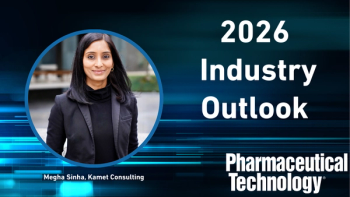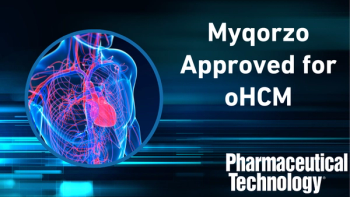
- Pharmaceutical Technology-01-02-2008
- Volume 32
- Issue 1
How to Meet Regulatory Challenges in the New Year
With 2007 projects wrapped up, or so we hope, forward-looking companies need to take their next step.
There are no holidays or time off when it comes to complying with regulations. Companies need to be ready to meet the latest standards at all times. With that in mind, new USFood and Drug Administration programs are sure to keep pharmaceutical companies of all sizes busy in the year ahead. Here's how to get through.
Patricia Santos-Serrão
Electronic common technical documents
The deadline for the much discussed , mandatory electronic Common Technical Docment (eCTD), has already arrived—January 1, 2008—andFDA's Center for Drug Evaluation and Research (CDER) now expects all investigational new drug and marketing applications to be submitted in electronic format. Companies unable to meet eCTD requirements don't have too many options. They can, a) resort to submitting applications in paper CTD format, using "temporary hardship" as an excuse, or b) outsource the work. Both solutions carry the possibility of delay, distraction, increased costs, and diminished prospects for success.
The more practical—and longterm— solution is to implement an eCTD publishing system in-house. Companies pursuing this option should seek to gain more than just eCTD compatible output. Getting an eCTD ready goes beyond the ability to produce PDF files with the appropriate hierarchy and XML backbone for navigation. The life cycle management of the product as a whole is critical in managing changes and requests for information from global agencies. Document management and document changes are also tied to product registrations and submission life cycles. An integrated solution is ideal for managing the document, submission, and product life cycles on an international level and should include the following information:
- Which products, formulations, dosages, dosage forms, and indications are currently approved in the target country(ies)?
- Which applications are affected if information (e.g., request for clarification, updates) is changed?
- How will a change in information affect non-US applications?
- What are the license renewal dates and actions that must be taken for product management worldwide?
Product strategy
The development of a global regulatory strategy document (GRSD) should be on top of a company's "to do list" in 2008. This document provides a gameplan for regulatory strategy to achieve a company's objectives in marketing and supporting a drug. The GRSD include information such as:
- Product's indication, intended use, and target population
- Product classification as defined by the regulatory agency (varies from country to country)
- Partners involved in the product (e.g., clinical research or manufacturer organizations, consultants, submission outsourcing partners, sales-marketing partners)
- Product registration strategy
- Order of application filings (e.g., which countries and when)
- Country specific requirements (e.g., renewals)
- Submission timelines
- Short- and long-term regulatory objectives
- Prescription versus over-the-counter designation
- Manufacturing strategy.
There are no guidelines or regulations that explain how a regulatory strategy should be compiled. However, several industry organizations have resources and conferences that outline what should be included for pharmaceuticals and biologics in a regulatory strategy.
RiskMAPs
Companies should also develop a risk minimization action plan (RiskMAP) either as part of a more diverse GRSD or as a separate initiative to meet current regulatory guidelines. A RiskMAP includes both risk assessment and risk minimization. A RiskMAP strategy should be multidimensional and address various methods of minimizing risk, including how to reduce and control potential drug misuse, abuse, or overall risk based on the target population's demographics and contraindications. Specifically, a RiskMAP strategy should outline the following and provide the corresonding benefits:
- Ensure appropriate drug labeling (e.g., black box warnings)
- Enable responsible product promotion
- Provide distribution controls for highly addictive products
- Demonstrate active pharmacovigilance
- Provide appropriate education of healthcare professionals, patients, and sales personnel.
Although a RiskMAP's primary purpose is to communicate actions a company will take to minimize risk, an effective RiskMAP should do so while preserving the plan's benefits.
In March 2005, FDA issued the Guidance for Industry: Development and Use of Risk Minimization Action Plans. This guidance emphasizes the agency's shift in evaluation of products, from a safety and efficacy model, to a benefit versus risk model, ensuring that the benefits outweigh the risks. Some experts have applauded this change, stating that no effective product can be completely safe because potential for adverse reaction among consumers almost always exists —and that, therefore, measuring benefit to risk is more practical and useful. According to the guidance:
Benefit and risk information emerges continually throughout a product's life cycle (i.e., during the investigational and marketing phases) and can reflect the results of both labeled and off-label uses. Benefits and risks can result in a range of corresponding positive and negative effects on patient outcomes that may: (1) Be cosmetic, symptomatic, or curative; (2) Alter the course of the disease ; and (3) Affect mortality. Benefits and risks are difficult to quantify and compare because they may apply to different individuals and are usually measured and valued differently. (1)
Conclusion
The year 2008 will be challenging for pharmaceutical companies given the ever evolving requirements of the FDA. Although this fact should not come as a surprise to anyone in the industry, companies still need to be prepared and be able to move quickly so as not to compromise their businesses.
Patricia Santos-Serrão, RAC, is a regulatory advisor in the life-sciences practice at QUMAS,
Reference
1. FDA, Guidance for Industry: Development and Use of Risk Minimization Action Plans (Rockville, MD, March 2005).
Articles in this issue
almost 18 years ago
Report from: India, January 2008almost 18 years ago
Pharmaceutical and Biopharmaceutical Manufacturing Advances in Irelandalmost 18 years ago
Singapore Attracts Pharmaceutical Manufacturing Investmentalmost 18 years ago
Coming Down the Pike: hES cellsalmost 18 years ago
Setting Cleaning Validation Acceptance Limits for Topical Formulationsalmost 18 years ago
Manufacturing Investment in Puerto Ricoalmost 18 years ago
Custom Synthesis of APIsalmost 18 years ago
Candidate CopoutNewsletter
Get the essential updates shaping the future of pharma manufacturing and compliance—subscribe today to Pharmaceutical Technology and never miss a breakthrough.




